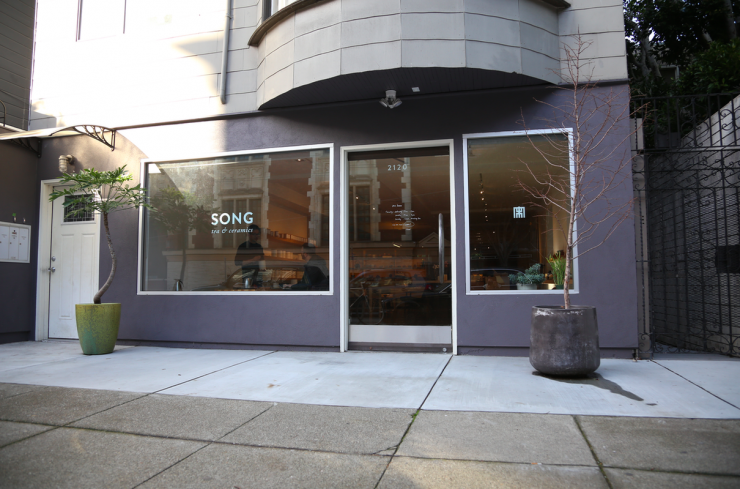
I’ve been rolling over this introduction in my head for weeks now—months, actually. It keeps coming back to a central thesis, something I’ve talked over with friends and colleagues in advance of writing this feature, and it goes something like this…
It’s never been more difficult to tell, on appearances alone, whether a coffee bar is great, or really even any good. Specialized equipment, once an obvious avenue of sussing out a shop’s chops, is no longer the sure-fire arbiter it once was; interior design, also once considered a logical way to separate wheat from chaff (or at least the haves from have-nots) has been democratized and imitated so thoroughly that everyone’s Instagrams kind of look the same. But there’s one sure-fire sign in 2016 that your coffee bar is up to something delicious: if you’re serving Song Tea.
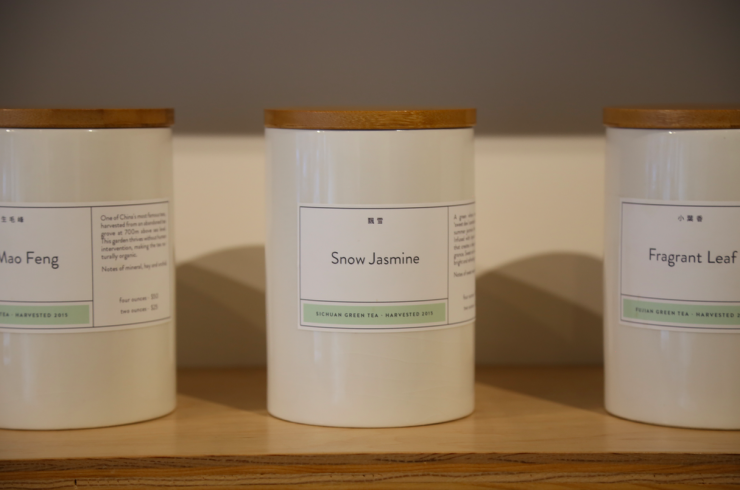
Yes, a tea company—that’s my choice du jour for today’s quality canary in the coffee coal mine. So dialed in is Song Tea’s approach to partnership, and so high are its standards, that if you are partnered with the San Francisco brand, I can nearly guarantee that your coffee—or your food, wine, and boutique goods—are of a very high quality. Their wholesale partner list reads like a list of places I’d like to spend my day—it is a who’s-who of America’s best and buzziest shops, including our recent Sprudgie Award winners for Best New Cafe (Paramount Coffee Project in Los Angeles) and Notable Roaster (Heart Coffee in Portland, Oregon).
Nothing is guaranteed, and I don’t want to deal in absolutes, but if your establishment serves Song Tea, as a consumer there is a high degree of certainty that bodes well for the entire experience. And behind that all is one man: Peter Luong, owner, founder, and world-traveling tea buyer for Song. Born in San Francisco’s Richmond District, Luong’s narrative is inextricably tied to the city he calls home, from growing up in his family’s traditional Chinese apothecary, to the days of dot com boom and bust, to his work now at Song, a living and thoroughly modern expression of San Francisco’s centuries-old connection with China.
From a chance meeting in 2015 at an event with Madcap Coffee in Grand Rapids, Michigan, my interest in Song Tea as a brand has grown into a greater passion and appreciation for tea itself. I’m buying new tea stuff all the time now, brewing at home, attempting to learn this soft and delicious art as a consumer and enthusiast. This culminated in an hour-long interview with Luong at his tastefully appointed headquarters in San Francisco, during which he effortlessly selected and steeped a dizzying assortment of delicious teas.
I emerged from the interview, gloriously tea-stoned, with an even deeper appreciation for the tremendous ally new wave coffee has found in Song Tea. We talked about how to grow a small business with mindfulness and care; a life spent traveling between San Francisco, China, and Taiwan; America’s dark past and bright future for tea appreciation; and why coffee and tea go together not despite, but rather, because of their inherent differences in nature. To accompany this interview we asked Peter Luong to suggest some of his favorite teas from the current Song collection, so that our readers may steep along at home. You’ll be glad you did.
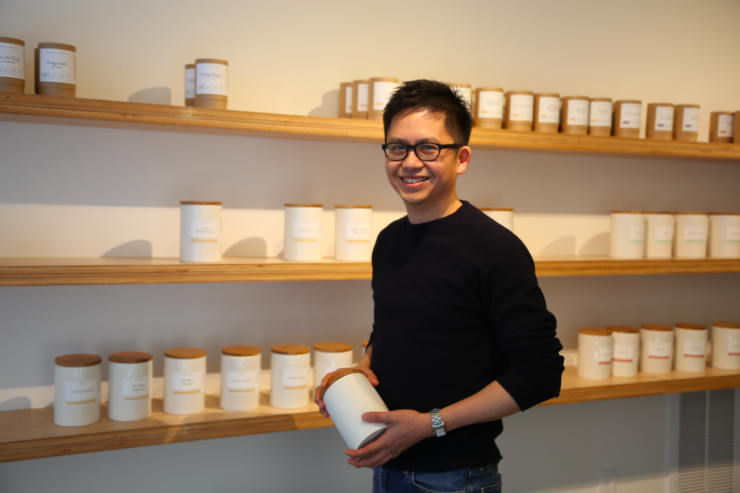
Let me start by asking about this first tea we’re drinking—where does its name come from?
This is called “Dragonwell” aka Long Jing as a transliteration—“Long Jing” means dragonwell in Chinese—and it’s got the Chinese characters as well. I’m very straightforward about how tea is named, and I prefer not to make up names. It’s pretty much direct translation.
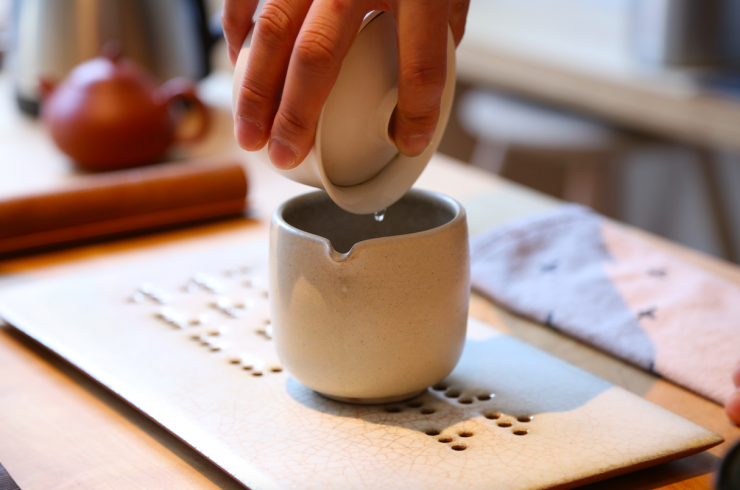
Why do you take this approach?
I find it confusing when you make up names for teas, because it moves the product further away from what it is. Tea itself is quite confusing, and this adds to that. You’re dealing with a product that has thousands of permutations in terms of variety, and just as many permutations in terms of quality. it’s very hard to tell what is good or what is not. It comes down to tasting, and beginning to build the context of what is good and what is not.
Even in China, there is a lot of bad tea, but the difference is in China, it is very clear what is good and what is bad. It’s a little muddled here—what it comes down to is taste.
I’ve been told before that “no good tea” makes its way to North America, and that this continent is a dumping ground for the poorest teas from the cultures that grow and revere them. What is your take on that?
It is true that in North America, you have a wide possibility for marketing and mismarketing tea to a customer base that is fairly unfamiliar with the product. You can put all those connections together, and come up with some not so good activities happening and dubious situations.
But is it hard to get quality tea further away from the source? This is basically an economic issue. Most of the best teas are very expensive and often pre-bought or pre-sold. There’s another force at work though, which is the North American and Western tea market buying low-grade tea traditionally and historically—that is very much a true thing. We’re a culture that’s been weaned on convenience, which in tea means things like tea bags, and teas that are stronger and harsher so we can add milk or sugar to them to make them taste better. You go to a grocery store, you find tea bags that cost just a few dollars for a pack of 40—that is very much the vast majority of the current market for tea here. Because of that, there’s a perception by vendors and sellers at origin that the American palate means Americans want lower-grade teas in the first place. It’s a chicken or the egg thing and I don’t know what came first. There’s also a propensity for American and Western tea buyers to go to places like China and say, ‘I only want teas at this price point”—this also feeds back into the wider issue, and it means now, when I go to China and say “Hey, I’m an American tea buyer,” they have sort of pre-selected what they think I will want to purchase. They say “Hey, I’ve got this for you,” and it’s rarely what I want.
Last, there’s an historic inflexibility to dealing with circumstances beyond the tea growers control. Market forces are a real part of buying tea, and circumstances change all the time for tea growers. If you come from North America and demand tea at the same price as last year, or two or three years ago, you can watch those market forces play out—quality can decrease, and quantity might decline.
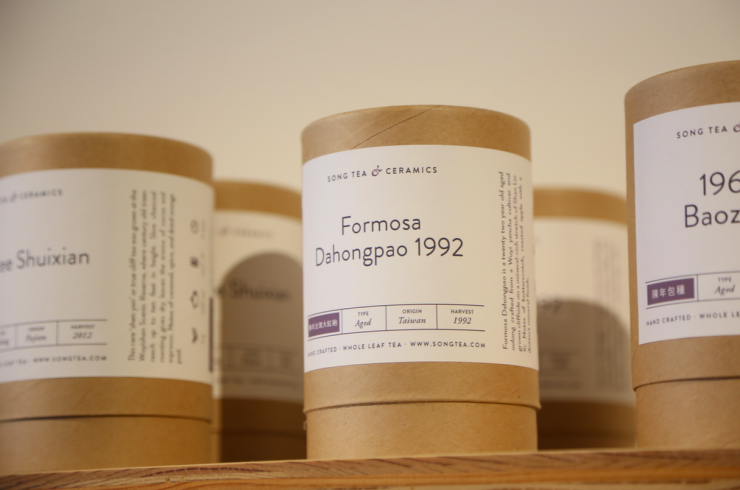
In coffee it’s common for some importers to set up multi-year contracts with coffee growers. Do you work with this kind of contract structure when you’re buying tea?
Each year, we work with a collection of teas—typically around 20 or 25 teas, and at most 30. The reason for that is, around 30 or 40 percent of the collection is rotated each year. So I differentiate between “refresh” and “rotate”. Rotate means it’s gone—it might come back in a few years, but it’s been removed or replaced with something else. Then there’s certain teas we refresh—we have a 2015 Dragonwell tea now, and it will refresh in 2016.
30% of the collection rotates, and that gives us a lot of flexibility. If the spring of 2016 is outrageously overpriced for its quality in China, say, or the overall quality is low for whatever reason, that gives us room to rotate another tea. The idea is to get customers to get used to our collection as something that is always varied. The idea is to not have the same 30 teas from year to year, no matter what, even if the tea is really bad one year or really expensive one year. The concept of rotation says, “Hey, this particular tea is not that great this year, let’s do something else.” The side effect is it makes the whole process really interesting and fun—there’s always new teas to try. When I travel to buy tea, I always find more teas than just the 25 or 30 we have in our collection—but I resist the temptation to grow the list. It allows me to fluctuate. There’s no long-standing contracts; there’s a handshake and an agreement that gets communicated. The grower knows I’ll be back next year, and that my company is growing, so I may want to buy a bit more in the next season.
Are all your teas from China?
“China and Taiwan. In mainland China, regions like Sichuan and Zhejiang produce totally different types and styles of teas. In Taiwan, it’s a very small island, but with many growing areas, and just as many tea makers that produce different teas.
The thing that’s slightly different between the coffee world and tea world is, in the coffee world, as I understand it, if you’re buying green beans in Kenya and looking at different lots, you might be side by side, traveling with another coffee company—the differentiation is that you’re going out there, but amongst the club of coffee roasters who are also traveling to origin to select green beans to be imported on their behalf, you’re sort of pretty much the same in that situation as everyone else. The *real* differentiation is what a coffee company does to a coffee once it comes back to America, or wherever they may be located, which is when they roast it, market and brand it, and oftentimes present the coffee themselves in their own cafes. To compare tea, what I buy for the most part is finished product, and the differentiation is all about being able to find a very good finished product in the first place. That means a different approach to things.
There are, of course, some exceptions—for example, three or four of our teas right now are actually roasted, which means I send them to a contract roaster in Taiwan with a very specific profile developed, independent of the growers. That roasting is happening in Taiwan, but to my specifications, which is where I’m able to influence at least some of our products in a style similar to how a roaster influences coffee.
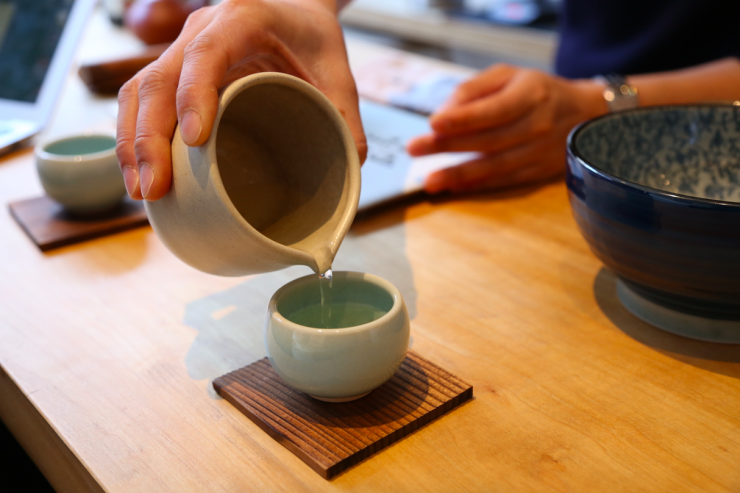
Talk to me a bit more about growing up around tea in San Francisco, and what led you to start Song.
My family operated an apothecary, a traditional Chinese apothecary, and over the last 30 years they started adding more and more tea to it. So I did grow up with it in some respects, but just because your father is a wine dealer doesn’t mean you’re into it—what brought me back was in around 2003, my dad asked me to come back and work on the family business. I would travel with him to China once or twice a year to source and find teas. And in the course of doing that I realized that I had been presented with a very interesting business problem—how to make this viable. I had been to college already, and before all this I was working as a business consultant and doing strategy consulting, making PowerPoints and Excel spreadsheets all day, and then I left consulting to be in the first round of dot coms in the late 1990s-early 2000s, and so when I joined the family business in 2003, I came to it with a business background. It has always intrigued me—I like business, I like thinking and solving problems. I will say that the tea aspect of it, appreciating tea and discovering how interesting it was, really only developed along the way for me as I worked with my parents. Good tea, it turns out, can taste very, very good.
So I helped my parents solve a problem. We rebranded, my parents retired, and I went and started my own thing. Song started selling tea in October of 2013, and I purchased the first tea for Song in the spring of 2013. The collection refreshes each spring, and we are now about to start on our fourth collection.
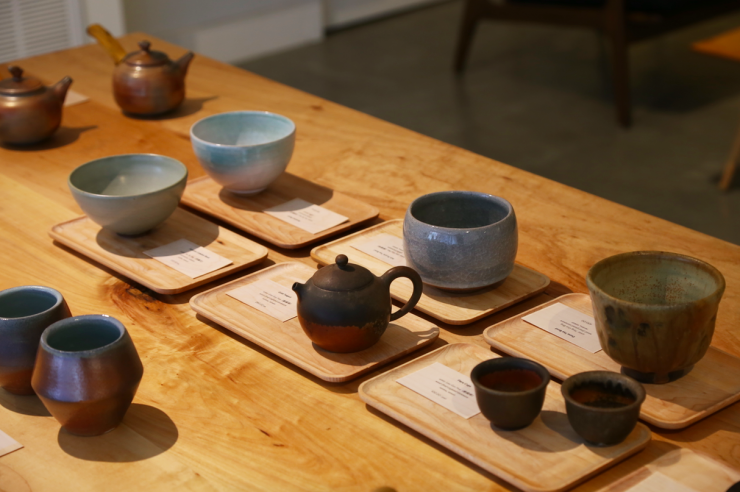
How often do you travel to Taiwan and China?
When we got started it took a lot of travel and investigation, like 2-3 months in China and Taiwan to get the project launched. Now I’m there for about a month in the spring harvest and then again in the winter, to have conversations about what’s coming up, as well as to set up purchasing the handmade teaware and ceramics we sell. All of our pieces are custom made to order. I’m there about a month and a half each year, but as the business grows and runs well, I hope to eventually be there more like 2, 3, or even 4 months a year, discovering more teas and then coming back to San Francisco to help release and launch those teas.
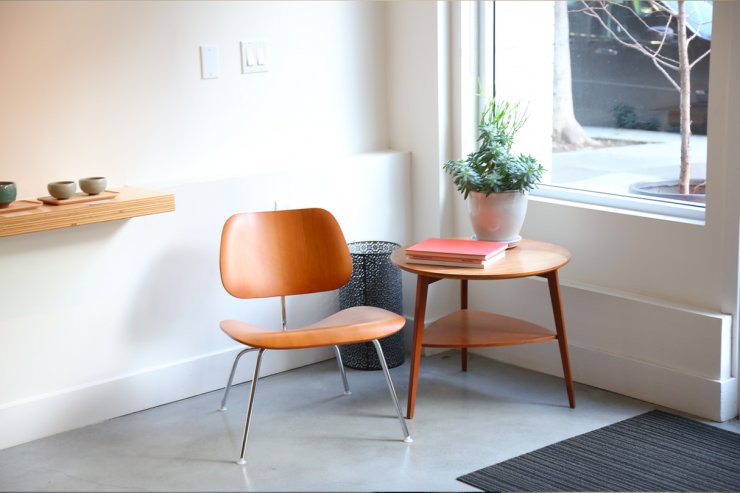
Talk to me about the relationship between Song Tea and coffee. Where does this connection come from?
Well, there’s a few perspectives. If you look purely from a business perspective, cafes in America are typically open from 7am to 6pm, or later. which means the hours of service are long. It makes business sense to work with cafes as a tea company. The question is, which cafes—because there are thousands of these new cafes out there—and we’ve over time turned down more than we’ve signed on, and have been very particular about maintaining quality and ensuring that the people we’ve partnered with can serve tea properly. It’s tough to gauge, but sometimes we’ll buy coffee independently from those prospective new accounts, just so that we can try and taste their coffees before making an agreement. But it is not only flavor; the quality character of the partnerships we have is so important as well.
I think ultimately we make the correct assumption that if a coffee bar really takes care of their beans, they’ll take care of our tea, too. There’s more range in tea brewing than there is in coffee brewing, but it is perhaps the closest two things I can think of, both so affected by endless variables. I’m drinking more coffee than ever these days, and as an example, I used to have this burr grinder from like 10 years ago, and it had never been cleaned or anything because I didn’t know better, and I found that when I ground coarser for French press it would taste more bitter, but if I ground smaller for a French press it would taste a bit better, but give me way more sludge. It seemed odd, but it was because I didn’t understand how particle size can effect coffee brewing, and that our crappy unclean grinder was affecting everything. Well, tea leaves are also every conceivable size and shape, and this influences how you brew for an individual tea…that kind of connectivity, not many other beverages can share.
So how did the work with these cafes start?
It started years ago at Ritual Coffee Roasters here in San Francisco. I knew (Ritual founder) Eileen Hassi, so when I launched Song that was one of the very first accounts we started working with. And out of that relationship I met Kevin Bohlin from Saint Frank, and met Ben Kaminsky as well. Ben has been a really great advisor for us, introducing us to different folks—he helped make Heart happen for us, and then Good Coffee came from Heart, and it starts sort of feeding form itself and building on itself.
The trick is not to overextend yourself or feel like you need to be on every corner. We are very particular about who we work with, and I am proud of that. Still, we could do better, and over the next couple of months we’ll add a robust account management program and training program, so we stay on top of things. It takes a lot of effort to make sure it’s going well.
What is the litmus test or set of standards you look for from potential coffee partners?
These are things we’ve thought and talked about for so long, they’ve become kind of second nature. I’m of the thinking that a good introduction is really important. One of the nicest emails I’ve received is from the guys at Good Coffee. It was like…”My name is this, I’ve been in coffee for this long, we’re doing this now…”—it was this really nice way to say hey, I would love to talk to you, and see if it makes sense to work together.
There isn’t really a litmus test—it comes down to rapport, and if we think it’s someone who can take care of our tea. But we also have terms—we expect a level of training, and we expect a degree of care. The size of an account is not important to us. We work with, for example, Sump Coffee in St. Louis—they aren’t a giant company but they are doing wonderful things, and they are so open to working with our teas, and appreciative. When you’re working with someone who is of a like mind, that is so important in a partnership. We also really don’t want to be all over the place—that is especially tough for tea, because when you set out to win X number of accounts, you only get one or two chances at actually buying the tea in the first place each year in the year. It means your cash outlay for the year has to assume you’re taking on 20 more accounts, paying for tea ahead of time.
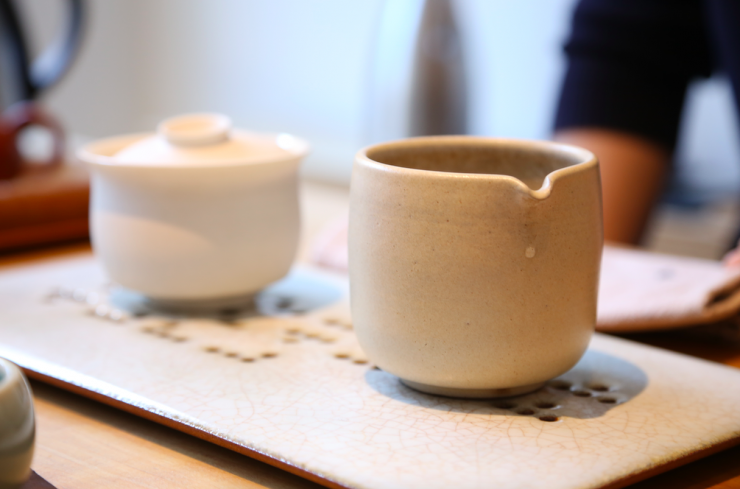
Do you work much with restaurants or bars?
We have a few accounts that are not coffee. We work with Coi, a restaurant in San Francisco—they have a very high-end tasting menu, and with a wine pairing, but they also are offering a tea pairing for their menu. It’s fun; instead of drinking wine, you’re served different tea-based drinks throughout the night. It’s not just straight tea, either—they’ve cold brewed some of them when appropriate. It’s so interesting, to have tea in a context that’s not just your typical “Hey, here’s the dessert menu” setting.
Little Gem here in San Francisco is also a restaurant and cafe we work with, as well as Paramount Coffee Project in Los Angeles. Whether it’s a restaurant, or food, or cafe, or whatever, they should be fun and interesting, because it’s not just about moving product. If it were just about moving product, I would have taken on 40 accounts in the last few years we chose to politely decline. That might have been great; I certainly would have made more money, and we would be a larger company. but then it’s not cool to our partners to scatter shot our teas all over the place. It devalues what is a really great product. And also, there isn’t all that much of some of these great teas available. We have to negotiate for incremental increases from year to year.
Good teas are spoken for, and in a year where there’s low rain fall, or labor shortages, there’s going to be less tea produced overall. There is not an infinite amount of tea that I can buy while maintaining quality; I am not in a position to just grow and grow without any consequences. I just want everything to be measured.
I’m enjoying drinking tea here with you in this lovely space. Who works here with you?
There’s three employees here now, and myself. We have a website, we have retail, and our wholesale operation—all of that is done by just 4 people. I want to grow the company in a way that’s measured…maybe because I came from a generation of dot coms where nothing was really measured, and there was money being thrown everywhere.
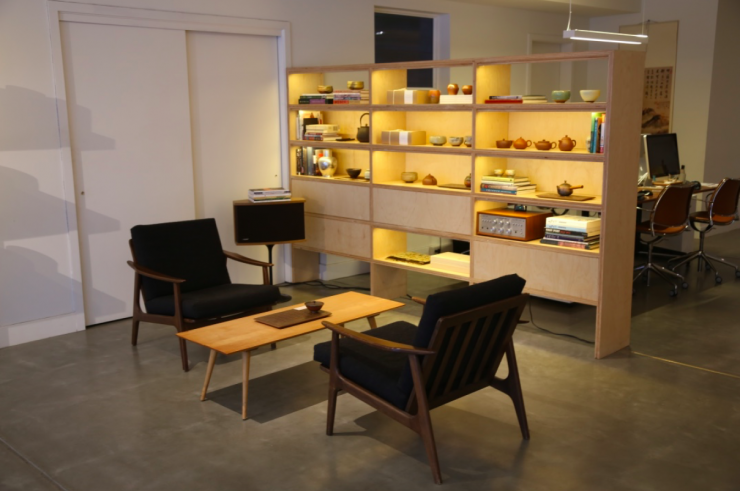
How did you find this retail space in San Francisco?
Craigslist! (laughs) Back in 2013, I had just left for China, to go do our first round of buying. Things were getting so expensive in San Francisco, with the tech companies really starting to just take over the real estate here. I couldn’t find anything and it was really frustrating, I didn’t want to waste money on a build out, and so I left to go buy tea, and that was the scary part—I was buying product, we knew we would launch the company soon, but we had no space to put it in. Not even a warehouse. So we looked at different spaces, and I worked with a broker to send me a lot of links, and Amanda was working with me part-time at the time—and nothing looked good . We almost took a space in Jackson Square, in downtown, but it was larger than we wanted and would have taken more work. We almost signed the lease but we thought…I don’t know, maybe we should share a warehouse somewhere…and then one day I was at the base of a mountain called Alishan, about to ascend the mountain the next day, staying in a bed and breakfest with internet access. And as I was browsing Craigslist, Amanda sent me the link…and we moved quickly after that. It was pretty much built out and we moved right in.
Who designed the space? What is the intent behind it?
There’s not a designer. Our space happened organically and functionally, to make use of our 1500 square feet. I knew we needed an office and a place to pack tea, and we also wanted a beautiful space to showcase teaware. This is a multi-function space—in the front it’s a tasting room / gallery, so customers can taste teas. Similar to a wine tasting context we charge $10 a person for a tasting, and if you buy something, we wave it. We didn’t used to charge at all for tastings, but we found this structure made things much clearer for everyone involved. It’s simple and casual, no pressure. The idea is to come in, browse teas, browse ceramics, and be able to understand us as a company and how we work. Customers do stroll back to our production area sometimes, and that’s fine, not a problem at all. Locals come in too—the difference between here and Chinatown, or somewhere like Fillmore Street, is that this neighborhood has much less foot traffic. 95% of people who come in are here specifically here because they want to be here. It’s great—you get this mix of people who are really into what you’re doing without the crowds who may not be into what you’re doing. Sure, if you have crowds you will make more money, because that’s a numbers thing, but here because we’re tucked away we’re able to create these experiences. It’s a really personal tea selection, and a chance to talk and figure out where these teas come from. and that’s what this space is about. There’s a clarity and simplicity to the space that’s meant to highlight our products—both teas and teawares—and it’s not kitschy at all. It’s simple, elegant, and it should reflect in some ways on the character and quality of the teas we’re offering.
What are some of the similarities you see between coffee and tea?
We drink coffee here. We aren’t shy about saying, just because you’re a tea company, the more you drink other beverages the more you develop a wider range and appreciation of flavors and texture and character. In terms of sourcing, you know, the thing with tea that might be different from coffee is, there aren’t large farms—just a few—but there are so many small producers, producing at various quality levels, and it has a lot to do with what their objective is. Are they in it to make money, or to produce something wonderful and unusual?
For example, this tea came from a mountain called Lishan. Nearly anyone dealing with Taiwanese oolongs will have something from Lishan—simply having a tea from there is accepted as an indicator of quality, but it is, of course, more nuanced than that. Just because a coffee is from Kenya doesn’t mean it’s good, or well roasted, you know? There are hundreds of individual producers working at different quality levels in a given area, and the goal is to find one or two that are…you know, my goal is to find the teas that are good, but not the norm. I don’t want to have the same list of teas everyone else is having. Look at someone like G&B Coffee in Los Angeles—to their credit, they’re kind of similar in a way of not wanting to do the same thing, to offer the exact same coffee menu as everywhere else. I think it’s boring to have the same teas and it becomes a marketing thing that is disconnected from product quality.
[Peter begins brewing our last tea together]
This is called Four Seasons Red, and you have not tried this. It is a very common cultivar—Four Seasons Spring is made into greener-style oolongs, which are usually not very expensive—this tea maker turned this into a red tea, and has given it a character that is phenomenal, with a deep sweetness and tang that is hard to describe. Smell.
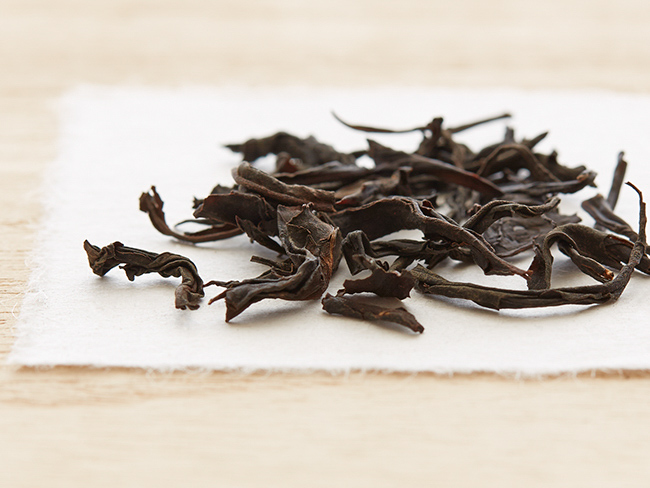
Wow, but how? How does tea become like that?
This is done by taking care of the plant, knowing when to pick, and what to do with it once you’ve picked. Length of oxidation, temperature, and humidity are all factors, as well as knowing when to stop the oxidation with heat, and then how to dry it, and maybe bake it or roast it to begin to impart different flavor to it— there’s quite a few variables at play that effect the outcome of a tea, and you have a very short time to do this. If you pick a tea leaf too late, two weeks, or too early, it can completely change the character. And after you pick it you have one or two days or even less to make your tea. There isn’t much wiggle room.
This craft is not what I do. I’m trying to be straightforward about it—I am not a tea grower. I buy what I think tastes good, and is unique and different. Most of the teas we purchase are expensive, or at least I think it’s expensive, but I think it will sell and in terms of what it costs us, I think it’s worth it. It’s a horrible way of doing things, to go buying with the idea that you can only spend this much money, and if it’s a very low bar, you’re effectively compromising the entire time. I feel all of us here feel very strongly about that. If a tea is good it will reveal itself, and there’s no amount of shenanigans with pricing and marketing that will cover the quality of a bad tea.
What’s your favorite tea you’ve ever had? What is your “desert island” tea?
This is an unanswerable question. On a deserted island I would go ahead and bring 6-8 teas, and then I would pick or choose, depending on what I felt like drinking at that moment. The chances of having tea in the first place on a desert island is very unlikely.
Of course I have favorites—this Four Seasons Red is one of my favorites. This is not only a serious, intellectual tea—we have those, too—but it is a very drinkable tea. It tastes good.
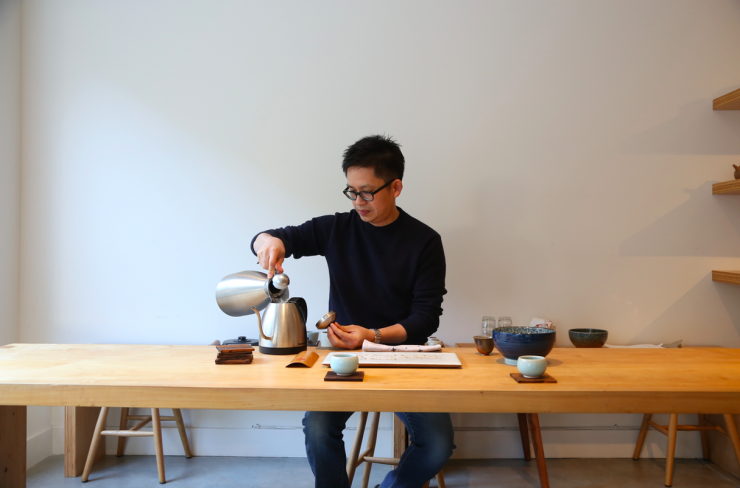
Peter Luong.
I’m watching you brew tea throughout this conversation, and you’re doing it without a scale or a timer, and it all tastes great. How?
Bad tea is extremely difficult to brew well, but good teas are easy to brew! So you can have a range that you brew in and it will turn out good. Secondly, all the wholesale accounts we work with will read this and say, “But Peter, why should I dose by gram and temperature and worry about steep times, if in this context you aren’t doing the same”—but for me, I can kind of just do it. It takes practice. Everyone can brew tea like this, but it takes dedication, brewing over and over so you’re so comfortable with it, and having a knowledge of each of the teas and what they want to be. I cook at home without a clock or a thermometer—it’s kind of like that, although lately I must concede that my pastas improve when I watch a clock while cooking.
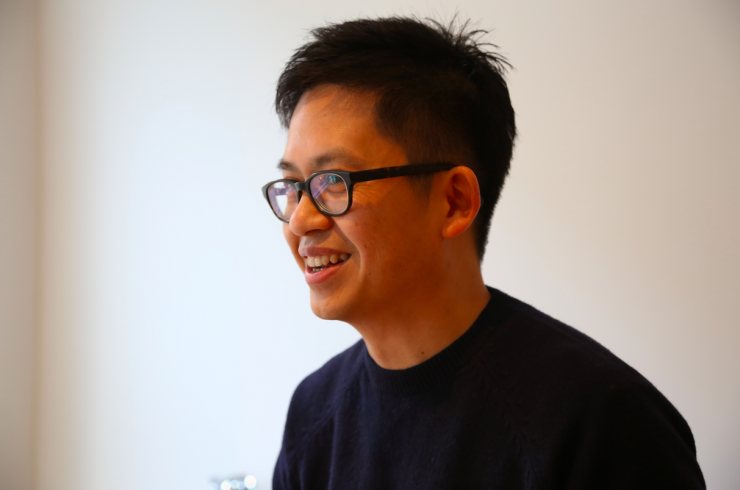
What’s the big thing you wish more people knew about tea?
I wish people would drink more tea. Not so much because I want to sell more tea—although I do!—but people need to drink a lot of tea, and bad tea, to understand contextually what is good and what is not. If you drink enough wine you’ll know, eat enough food you’ll know—but people tend to fixate on things and think it’s quality or think it’s good but they haven’t fully experienced what good really means. It’s not specific to tea—it’s generic to food and quality. If you eat and drink the same things over and over you won’t extend your palate. You could be eating the best stuff, or the worst stuff, but without any context it won’t matter. I don’t like the ideas of tea masters or “tea sommeliers”—I’m a little more casual about it. If you drink enough of something and have developed a context and a profile, you will know what’s good and what’s not. Being able to judge quality is as simple as that. I think titles and this and that, they confuse people and make people assume you have to be mystically good or wonderful to develop a palate. And that’s not the case. It’s just practice like anything else.
Jordan Michelman is a co-founder and editor at Sprudge.com. Read more Jordan Michelman on Sprudge.
The post Song Tea: Reading The Leaves With Founder Peter Luong appeared first on Sprudge.

